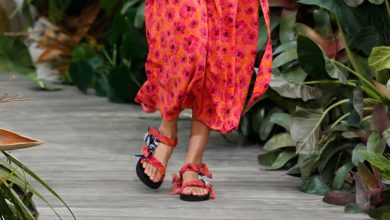Exploring the Evolution and Impact of Fabric Technologies on Durability and Comfort

Textile innovation is a cornerstone of the modern apparel industry, shaping how we experience clothing and its functionality. Advancements, such as the most durable jeans, exemplify significant strides that have been made. These innovations are pivotal as they answer the dual call for garments that last longer and provide exceptional comfort.
By delving into the finer aspects of textile development—from the manipulation of fibers to the final stitching—industry professionals strive to generate not only tough but also embody the gentle touch and adaptability that define modern comfort standards.
This pursuit has led to a notable improvement in the consumer experience, with textiles now offering a blend of practicality, resilience, and a pleasing tactile sensation.
Key Takeaways
- Innovations in textile technologies have markedly improved the durability and comfort of fabrics, affecting both everyday wear and specialized performance clothing.
- The integration of comfort, functionality, and style is a driving force in the current fashion industry, offering consumers pieces that are as practical as they are aesthetically pleasing.
- Sustainability and environmental consciousness play significant roles in advancing fabric technologies, with the industry striving to minimize its ecological footprint.
- Consumer demand for long-lasting and high-performing textiles has catalyzed the material science innovations we see today, shaping future trends in the industry.
Understanding Durability: What Makes Fabrics Last Longer?
To grasp the concept of durability within the textile industry, it’s essential to examine the interplay of various factors. These factors encompass selecting high-quality fibers, carefully considering weaves, and proficient finishing treatments. The goal is to achieve a fabric with exemplary wear resistance, sufficient tensile strength, and the ability to retain color and structure after repeated use.
One of the keenest demonstrations of these attributes can be found in the workwear and outdoor apparel category, where materials are expected to resist wear and tear over many cycles of use.
This emphasis on long-lasting fabrics has prompted in-depth research into natural and synthetic fibers and their interactions, leading to innovations that contribute to textiles capable of tackling the demands of daily life and work environments.
Comfort and Performance: How Advanced Fibers Change the Game
When comfort converges with performance in fabric technology, the result is a groundbreaking shift in the definition of usability within textiles. The drive to enhance these aspects has led to the emergence of advanced fibers, such as those engineered for moisture-wicking, rapid drying, and even thermoregulation, to suit various climatic conditions and activity levels.
Consider the athlete requiring sportswear that supports their performance by maintaining an optimal body temperature and managing perspiration. These demands have pushed textile innovators to develop fabrics that not only endure vigorous physical activities but also play an active role in the comfort and performance of the wearer.
By harmonizing sophisticated fiber properties with design creativity, the industry has ushered in an era of apparel that truly works in synchronization with the human body.
Environment and Sustainability: Weaving Eco-Friendliness into Fabric Production
As the spotlight on the fashion industry’s environmental impact intensifies, eco-consciousness has become an indispensable thread in the fabric of textile manufacturing. The rising demand for sustainable solutions has prompted innovation at various stages of the production process.
This trend towards greener practices is evident from using organic materials to incorporating eco-friendly dyes and water-saving technologies. The sector has recognized that its responsibility extends beyond the production line, as seen in adopting circular fashion principles that encourage recycling and upcycling. Advancements such as biodegradable fabrics and reducing harmful chemical use signal the industry’s proactive attitude towards a more sustainable future.
Fashion Meets Function: The Rise of Stylish Performance Wear
The intersection of high fashion and utility wear represents a trend that has transformed consumers’ wardrobes into an assemblage of versatile pieces suitable for various occasions. The evolution of fabric technologies has played a monumental role in facilitating this blend.
Designers now confidently utilize innovative textiles that offer functionality without sacrificing visual appeal. This shift illustrates a breakthrough in consumer ideology, where practicality no longer necessitates a compromise on sartorial elegance. As garments increasingly fulfill multiple roles, consumers enjoy the liberty of seamless transitions from work to social engagements to athletic pursuits—each activity supported by thoughtfully engineered attire.
Behind the Seams: The Engineering of Tough Yet Comfortable Materials
Fabric engineering is meticulously creating materials that persevere while maintaining a cozy fit. By rigorously testing textiles under various conditions and leveraging technological advancements, professionals strive to forge fabrics that resist the stresses they will encounter in their intended applications.
The push towards finer, tougher, and adaptable fabrics has also gained momentum from the rise in consumer awareness. People today actively seek out items labeled as high-performance or ultra-durable, inciting manufacturers to prioritize these qualities in their offerings.
Consumer Expectations: How Durability Influences Buying Decisions
Today’s savvy consumers prioritize durability when shopping for apparel, considering it a benchmark for quality and value. Research has demonstrated a strong correlation between the perceived endurance of a fabric and the willingness of shoppers to purchase and even pay a premium for it.
This market trend has elevated durability to one of the top features buyers look for, particularly in activewear, children’s clothing, and work-related attire. What ultimately entices the consumer is the promise of a garment that balances long-lasting wearability with functional comfort, signifying a shift towards more conscientious, long-term investments in clothing.
The Future of Fabrics: Trends and Predictions in Textile Technology
The fabric industry is on the precipice of a new dawn with the promise of technologies that may soon redefine the very fibers of our clothing. The exhilarating potential of smart textiles, imbued with sensory and reactive capabilities, paves the way for garments that can adapt to environmental variables such as temperature changes or even monitor health metrics.
The utilization of biotechnology in fiber development is set to introduce materials that are not only groundbreaking in performance but also leading the charge in environmental preservation. With such innovations on the horizon, the textile industry is on track to an exciting future, marked by a synergy of style, substance, and sustainability that will continue revolutionizing our approach to fabric and fashion.



